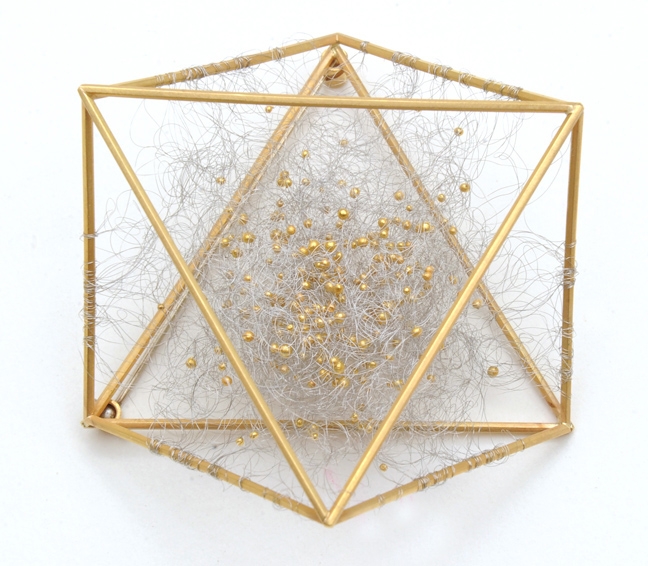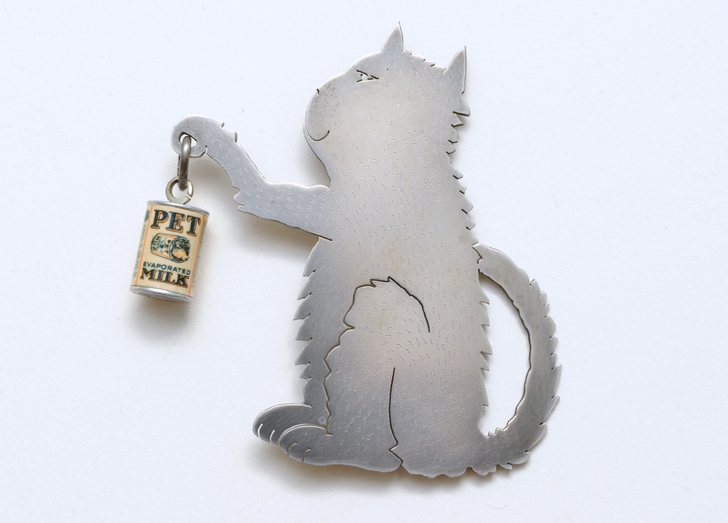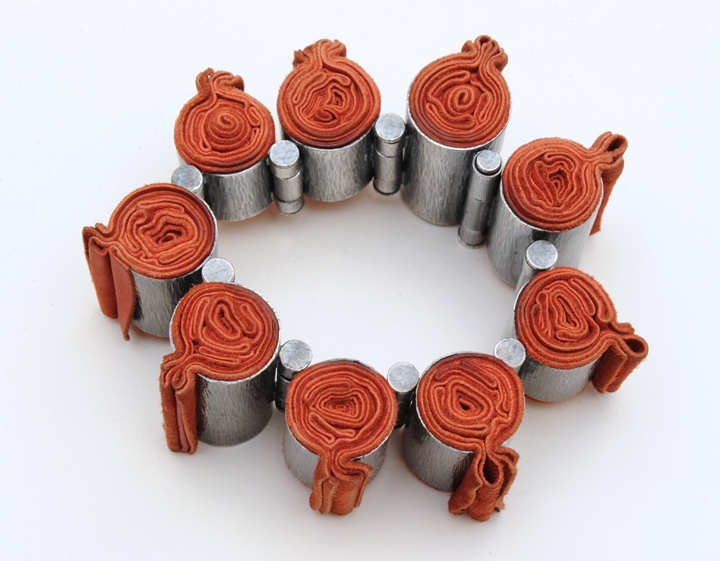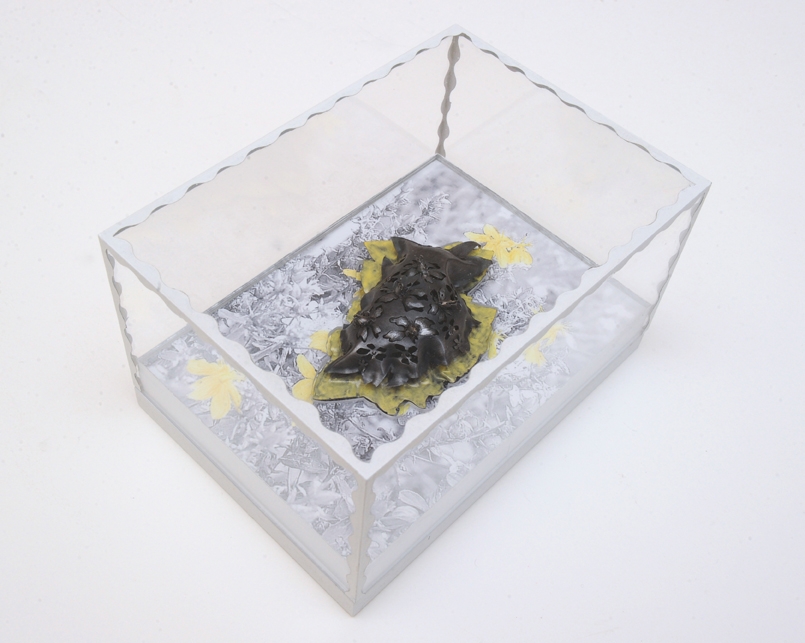
Fast forward to California. ‘While I was living there, I took Christie Romero’s antique and period jewelry course. Christie is a wonderful teacher and guide and she introduced me to the American Society of Jewelry Historians, where I continue to be a member and to AJF member Karen Lorene’s gallery, Facèré, where I treated myself to my first purchase of contemporary art jewelry ten years ago.’
‘Next, I was off to Jewelry Camp, a week-long series of lectures and workshops about jewelry,’ Susan continues. ‘It was there I saw work by Calder, Braque, Man Ray – fabulous pieces, but clearly out of my reach. The next year I went to a lecture given by William Harper, and that was my aha moment,’ she notes. ‘I’d never heard of William Harper or his work, yet I left the lecture eager to learn more. When I asked Christie where I could find books about art jewelry, she told me to contact Charon Kransen,’ Susan says, ‘and I credit Charon for completing my transformation to a serious collector.’

‘Another of my favorite pieces,’ Susan continues, ‘is a brooch by Sondra Sherman from her Anthophobia series. I relate to it, perhaps because I’m in the medical field, or perhaps it’s because my experiences with corsages were also somewhat anxiety-provoking in high school!’

When asked how she’s building her collection, Susan admits, ‘I don’t have a plan for building my collection. I feel I should have one, but I don’t. I do consider my purchases more carefully now than I did when I first began collecting because I’m more knowledgeable. There are artists whose work I know I want to have in my collection so I try to limit spur of the moment purchases. However, when I see fascinating work by an artist I hadn’t previously known of I want to add that too. It’s difficult to balance between the two. I like to know what the artist was thinking in designing the piece, like Sondra’s piece, for example. I also have a piece by Sergey Jivetin [AJF Emerging Artist winner for 2005] titled Brazil because this plume-like projection on the piece reminded him of the explosion in the movie Brazil, so I rented the movie because I hadn’t seen it in many years and couldn’t recall the scene.’

Susan was raised on a farm in western Pennsylvania and has since lived in both New York and California. She’s a masters-prepared oncology nurse and describes her work, ‘I’ve spent my entire career working in cancer clinical research, primarily in hospital settings, but for the past five years in the pharmaceutical industry. My husband is a hematologist/oncologist and I have two stepsons. One is an architect and specializes in hospital architecture: the other is a photojournalist who works for Getty. We have two grandsons, Zachary, five, and Jacob, three.’

Susan credits Charon Kransen and AJF with helping her continue her education about contemporary art jewelry. ‘I’m very fortunate Charon lives only a few blocks from me,’ she says. ‘I’ve learned a tremendous amount from him and he’s exposed me to artists’ work I wouldn’t necessarily have considered on my own and I’ve become more adventurous in my collecting.’
‘Patti Bleicher has worked with the Montclair Museum, the Newark Museum and the 92nd St Y in scheduling lectures in the New York area this winter,’ Susan says. ‘And I’ve attended receptions with presentations at Gallery Loupe, one with Andrea Wagner and another with Vered Kaminski. Patti has really been instrumental in raising awareness of artist jewelry in the New York and New Jersey area. I also attend American Society of Jewelry Historian lectures, which are excellent and a good opportunity to learn about the field of jewelry.’
‘I’ve probably learned most from being a member of AJF,’ Susan concludes. ‘Going on the trips and attending SOFA, meeting other AJF members, seeing what they collect and talking with them and with artists about the work. AJF has really opened up a world of new artists and venues for learning about artist jewelry and has also helped sharpen my eye and the way I look at pieces.’




